
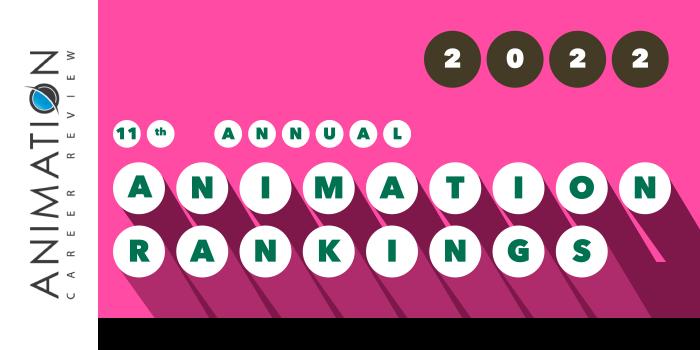
What are the top UK animation colleges?
| Ranking | School | City |
|---|---|---|
| 1 | Bournemouth University | Bournemouth |
| 2 | Royal College of Art | London |
| 3 | Pearson College of London | London |
| 4 | Teesside University | North Yorkshire |
| 5 | University of Hertfordshire | Hertfordshire |
| 6 | Staffordshire University | Staffordshire |
| 7 | Glasgow School of Art | Glasgow |
| 8 | University of Edinburgh | Edinburgh |
| 9 | Ravensbourne University of London | London |
| 10 | University of Portsmouth | Portsmouth |
Our 2022 rankings of the top animation colleges in the United Kingdom. For this ranking we only consider formal degree programs (bachelor's degree or equivalent). For an explanation of our ranking criteria, click here.

Bournemouth University (BU) is home to the National Centre for Computer Animation (NCCA)—one of just a few research-intensive animation centres in the UK. Serving more than 19,000 students and one of the Top 70 Young Universities in the World, BU is also one of the few institutions that have been granted Houdini Certified School status by Side Effects Software.
The NCCA has three undergraduate Animation course options: BA (Hons) Computer Animation Art & Design, BA (Hons) Computer Animation Technical Arts and BA (Hons) Visual Effects. Students can study the courses for 3 years with an optional 8-week placement, or 4 years with a 30-week placement and will have access to specialist facilities including a new green screen and motion capture studio, as well as animation laboratories, equipped with industry-standard software. All courses culminate with a major project and dissertation, which students may complete individually or in a group.
Graduates of the BA (Hons) Animation degrees at Bournemouth University enjoy a near 90% employment rate or further study within six months of graduation. BU NCCA alumni have worked on films such as Fantastic Beasts: The Crimes of Grindelwald, The Avengers, Blade Runner 2049, Solo: A Star Wars Story, and Dunkirk.
At postgraduate level, the NCCA offers courses in MA 3D Computer Animation, MA Digital Effects, MSc Computer Animation & Visual Effects, and MSc Artificial Intelligence for Media. The Master’s degrees take one year to complete, including an optional three-month placement. Postgraduate students will learn and create in a professional studio environment with facilities that include green screen studios and animation labs, a motion capture studio, and a full suite of industry standard 2D and 3D Software such as Maya, Mari, Z-Brush, Nuke, Adobe Creative Suite, Substance Painter and many more. Other features include a collaborative environment, the visiting practitioners lecture series, and the Master’s Project, with a set production time to create a professional, original project that will be presented at the Degree Show for major industry recruiters.
Graduates from the BU Master's courses are highly sought after within the industry. Our alumni have worked on many high-profile projects, including movies such as Venom, Paddington 2, Avatar, Star Wars, the Lord of the Rings trilogy, King Kong, Shrek, Guardians of Ga'hoole, the Harry Potter series, Sucker Punch, Happy Feet, Monsters vs Aliens, James Bond and Judge Dredd, among many others.
All NCCA students also have the opportunity to attend the Annual BFX Festival, which features masterclasses and talks by award-winning industry professionals.
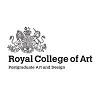
The Royal College of Art (RCA) is a postgraduate institution that has advanced degrees in the areas of Art, Communication, Design, and Humanities. Established in 1837 and serving around 2,300 students, RCA is the only entirely postgraduate institution of university status offering degrees in these specific areas. Programs at RCA are housed in the Schools of Architecture, Communication, Arts & Humanities, and Design.
The School of Communication is home to the Animation Program, which has been in existence for more than 30 years. Leading to an MA, Animation is a multidisciplinary program that takes two-years to complete, full-time. The program explores animation forms, methods and contexts, VR and AR, drawing and illustration, projection mapping, extra-cinematic animation, games and apps, drama, film and media, STEM disciplines, and more.
Other program features include visiting artists and professionals, workshops, multidisciplinary elective options, a collaborative learning environment, and experiential learning opportunities such as field trips to animation studios, museums, exhibitions, and archives.
The Animation MA Program at Royal College of Art culminates with an Independent Research Project that will be presented to the Examination Board.
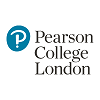
Pearson College London (PCL) houses Escape Studios, which provides programs in Animation, Game Art, Motion Graphics, and Visual Effects. All PCL programs have been created in partnership with major studios such as PlayStation London, Framestore, and DNEG. Pearson College of London is also a Houdini Certified School and an Unreal Engine Authorized Training Center—one of the few in the UK.
Students in all PCL programs have the opportunity to network with industry partners such as Cinesite, Industrial Light & Magic (ILM), London Studios, MPC, Passion Pictures, Blue Zoo, State of Play, and Jellyfish Pictures. Internships and study abroad opportunities are part of the PCL programs as well as access to artists who have worked for DreamWorks, Warner Bros., Fox, and Disney.
Founded in 2002, Escape Studios at Pearson College London has the following degree pathways for animators: BA/MArt in The Art of Computer Animation (Integrated Masters) and MA Degrees in 3D Animation, Character & Creature Creation, and Storyboarding & Previsualization. Short Programs lasting anywhere from eight to 20 weeks are available and include examples such as 3D Animation (20 weeks), Advanced Animation (18 weeks), Storyboarding & Previsualization (12 weeks or 18 weeks), and 2D Animation with Toon Boom Harmony (12 weeks), Animation (12 weeks).
Students in all Escape Studios programs will complete intensive training sessions on industry-professional software such as Maya and Toon Boom Harmony. Programs also take place in classrooms that look and feel like real animation studios. Students will have the opportunity to master all areas of the animation production pipeline.
PCL - Escape Studios graduates have worked on productions such as Harry Potter, Star Wars, Avengers, Captain America: Civil War, Ex Machina, Fantastic Beasts and Where to Find Them, Gravity, Interstellar, Star Wars: The Force Awakens, and The Jungle Book. PCL alumni have also worked on games such as Assassin’s Creed and Forza Horizon, and award winning advertisements. Many program alumni have gone on to launch their own studios or freelance businesses.
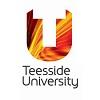
Animation students at Teesside University have access to state-of-the-art engineering and production facilities, instructors who are leaders in the film, television, and animation industries, and networking opportunities with industry professionals through Animex—Teesside’s International Festival of Animation and Computer Games featuring industry leaders from Disney, Sony, Pixar, and Rockstar Games, and ExpoTees—the school’s Annual Exposition of final year student works. Teesside Animation students also benefit from Teesside’s strategic partnerships with local employers in all sectors, and major studios and companies such as Industrial Light & Magic (ILM), Double Eleven, Ubisoft, Animmersion, Cubic, and Creative Assembly.
Housed in the Department of Transmedia, Digital Art & Animation in the Teesside School of Computing, Engineering & Digital Technologies, the Animation Program consists of an Animation MA and BA Degrees in Concept Art, 2D Animation and Stop Motion, Visual Effects, and Animation. All programs provide an optional Foundation Year, short work placements, internships, and other work experience opportunities. Programs culminate with a film sequence or short film
Founded as Constantine Technical College in 1930, Teesside University serves close to 21,300 students enrolled in dozens of programs in five schools. School of Computing, Engineering & Digital Technologies graduates have worked on films and AAA games such as Red Dead Redemption 2, Star Wars: The Last Jedi, and Spider-Man: Far From Home.

University of Hertfordshire (UH) houses the School of Creative Arts, which serves a large number of the school’s 30,000+ students. Established in 1952 as Hatfield Technical College, UH opened with just 1,500 students.
The UH School of Creative Arts has BA Degree options in 2D Digital Animation and 3D Animation & Visual Effects. At the graduate level, the school has an Animation MA that emphasizes multidisciplinary studies, research, and project-based work. Students in this program will actively participate in lectures, seminars, workshops, work placements, and the study abroad year. Other Animation MA Program features include the opportunity to complete a simulated brief in collaboration with program alumni and organizations such as Promise and National Poetry Day.
Graduates of the University of Hertfordshire Animation Program have been recruited by Industrial Light & Magic (ILM), Blue Zoo, and Creative Assembly, among others.
At the undergraduate level, 2D Digital Animation and 3D Animation & Visual Effects BA will have opportunities to complete several projects, including a final film project to be screened at the School of Creative Arts animation Exposé. Students will also complete a number of simulated real-world briefs, a portfolio of their best work, and internships and study abroad experiences at partner universities in throughout Europe, and in Australia, South America, Africa, Canada, and Asia.
University of Hertfordshire graduates enjoy a 96.5% employment rate. UH School of Creative Arts alumni have won Emmy’s BAFTAs, and Oscars for their work on productions such as Game of Thrones, Harry Potter, Avatar, The Chronicles of Narnia, Gravity, The Jungle Book, Inception, Star Wars, and The Lion King.
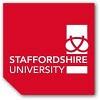
Staffordshire University (Stafford) opened as a polytechnic institute in 1914. The school received university status in 1992. Serving more than 20,000 students around the world, Stafford Houses three academic schools (Digital, Technologies and Arts; Health, Science and Wellbeing; and Justice, Security and Sustainability), the Institute of Education, and Staffordshire University London.
The School of Digital, Technologies and Arts has three-year Animation Program that leads to a BA. Students may Specialize in 2D or 3D Digital, Computer Games or Stop Motion Animation. As part of the School of Digital, Technologies and Arts, Animation students have access to state-of-the-art design, music, and sound studios, labs and production studio spaces, creative workshops, guest speakers, and opportunities to participate in educational trips. All students have the opportunity to present their work at industry events such as the Art and Design Degree Show, New Designers, and GradEX.
Other program features include global connections to Aardman, Nickelodeon, Pixar, and Walt Disney, participation in public screening events, international trips, and UK animation festival visits.
The program culminates with the production of a professional showreel and body of work that supports the students career goals. In the final year of the Animation BA Program, students will have the opportunity to present their work to a panel of industry leaders as part of Industry Portfolio Week.
Stafford Animation graduates work in Animation, Stop Motion Animation, and Film at studios such as Brown Bag Films (BBF), DNEG (formerly Double Negative), Aardman Animation, Cinesite, Mackinnon & Saunders, Boulder Media Animation, Carse & Waterman, and many others. Program alumni have worked on projects such as the CiTV series Go Jetters, Isle of Dogs, and Chuck Steel: Night of the Trampires.

Glasgow School of Art (GSofA or GSA) houses the School of Simulation and Visualization (SimVis), which has a BSc Program that provides the opportunity to study animation. The BSc in Immersive Systems Design has a Specialization in 3D Modeling that explores 3D Modeling for Animation, VFX, and Digital Games. The program is supported through investments and relationships with Sony, Amazon, Microsoft, Sky Broadcasting, and Meta, among others.
Other program features include access to state-of-the-art production and sound studios housed in the Hub at Pacific Quay, courses taught by Unity Certified instructors, internship and study abroad opportunities, access to open studios, and portfolio development services.
Graduates of the BSc Program at Glasgow School of Art are prepared to pursue positions such as Animator, Character Animator, Environment Artist, 3D Modeler for Film and Games, Asset Artist, VFX Artist, Look Development Artist, and Texture Artist, among others.
The School of Simulation and Visualization at GSA has an additional program option for animators interested in producing sound for animated films. The BDes in Sound for Moving Image is a two-year program that explores sound for animation, film, electronic games, television, new media, and visual art.
Graduates of the Sound for the Moving Image BDes Program at Glasgow School of Art have established careers in Animation, Film and Television, Game Design and Development, and Audio-Visual Arts, among others.
Founded in 1845 as one of the first Government Schools of Design, Glasgow School of Art serves more than 2,000 students enrolled in more than 50 programs leading to an undergraduate, graduate or PhD. Foundation Programs and single courses offered during the day or on weekends are also available.
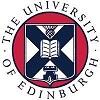
Edinburgh College of Art (ECA) is one of 21 schools housed across University of Edinburgh’s three colleges including Arts, Humanities & Social Sciences, Medicine & Veterinary Medicine, and Science & Engineering. ECA dates back to the 1760 when it was founded at the Trustees’ Academy—the first public school of art in Britain. The school became Edinburgh College of Art in 1906, and merged with University of Edinburgh in 2011.
Within ECA are five schools: Edinburgh School of Architecture and Landscape Architecture (ESALA), the School of Art, School of Design, Reid School of Music, and History of Art. The ECA School of Design has an Animation Program that leads to a BA. Program features include small class sizes, individual and team-based projects, visiting animators who are industry leaders, access to state-of-the-art facilities and equipment such as CGI Labs, rostrum cameras, and stop frame studios, individual workspaces, and technical workshops. During the final year of the ECA Animation BA Program, students will complete a film as part of a team or solo.
ECA Animation graduates have launched successful careers at animation and game studios such as Aardman, Rockstar North, Rushes, Framestore, and MPC Film. Program alumni have also worked for directors such as Tim Burton. Many have launched their own studios or work as are independent filmmakers.

Ravensbourne University London, formerly Ravensbourne College of Design and Communication, has Digital Media and Design Programs that lead to an undergraduate or graduate degree. Short programs and pre-degree options are also available. Founded in 1962 and serving 2,600 students, Ravensbourne University London (Ravensbourne) has an Animation BA Program that provides the opportunity to collaborate on live briefs within the animation industry, work on individual and group projects, and obtain advice and direction through mentorships with industry professionals.
Students in this three-year, full-time program also have access to state-of-the-art production studios equipped with industry-standard software, internship and study abroad experiences, and the opportunity to complete an industry-ready portfolio at the end of the program. Areas explored include Animation Fundamentals, Visual Narrative, Human and Creature Mechanics, Character Modeling and Rigging, Contemporary Culture, Big Ideas and Philosophies, and the Animation Industry.
Since 2017, graduates of the Ravensbourne University London Animation BA Program have enjoyed a 90%-96.4% employment rate within six months of graduation. Program alumni work in Animation, TV and Film, Gaming, Corporate Films, Advertising, Publishing, App Development, and VFX, among other areas.

Before gaining university status in 1992, University of Portsmouth was one of the largest polytechnic schools in the UK. Established in 1908 as a school for chemistry and engineering, University of Portsmouth serves 28,000 students today with access to programs in just about every discipline. For animators, University of Portsmouth has an Animation BA, a Computer Animation and Visual Effects BSc and a Computer Animation MSc.
Accredited by JAMES (Joint Audio Media Education Services), the Animation BA consists of 120 credit hours of study including lectures, seminars, one-on-one tutorials, and workshops. Courses for this program are taught by professionals who have worked for Framestore, Disney, Weta, Sony, Warner Bros., and the BBC, among others.
BA students will complete a number of projects, employment preparation courses, and a paid or unpaid internship. The Animation BA Program culminates with a dissertation, showreel, and portfolio. The Animation BA Program at University of Portsmouth can be completed in just three years, full-time. Program graduates work at Framestore, Sony Pictures Animation, Cartoon Network, Climax, Kuju Games, and Centroid 3D in Pinewood Studios. Program alumni have worked on productions such as Avatar, The Amazing World of Gumball, Life of Pi, and Tim Burton’s Alice in Wonderland.
Also JAMES-accredited, the Computer Animation and Visual Effects BSc explores 3D Animation, Compositing, Physics-Based Simulation, and Concept Drawing, as well as industry-standard software such as Autodesk 3ds Max, Houdini, Maya, NukeX, and ZBrush. Program features include courses taught by active professionals in the Animation and VFX industries, access to motion capture facilities and the VR Lab, guest speakers, internship opportunities, participation in Game Jam Portsmouth, and sponsored prizes for the Final Graduation Project.
Graduates of the Computer Animation and Visual Effects BSc at University of Portsmouth enjoy a 90% job or advanced study placement rate within 15 months of completing the program. Program alumni work in 3D Animation, VFX for Television and Film, Game Art and Design, and many other areas.
The Computer Animation MSc is a 180 credit hour program with Specializations in Facial Animation, Motion Capture and Virtual Reality. The program explores the design and development 2D and 3D content, computer animation software and techniques, industry-standard hardware, and client-based research techniques. In addition to Animation, graduates of the MSc Program are prepared to pursue positions in areas such as AR/VR, VFX, 2D and 3D Graphics, Television Production, Motion Capture, Project Planning, and Art Direction.
